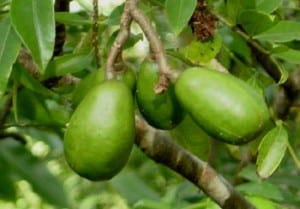The canistel (Pouteria campechiana) is an evergreen treenative to southern Mexico and Central America. It is cultivated in other countries, such as Brazil, Taiwan, and Vietnam for its fruit. Its binomial name is derived from the Mexican town ofCampeche, where it is native. It is sometimes (wrongly) referred to as Lucuma campechiana. In the Philippines it is called chesa.
The canistel grows up to 10 meters (33 ft) high, and produces orange-yellow fruit, also called yellow sapote, up to 7 centimeters (2.8 in) long, which are edible raw. Canistel flesh is sweet, with a texture often compared to that of a cooked eggyolk, hence its colloquial name of “eggfruit.” It is closely related to the Mamey sapote and abiu.
Health Benefits of Canistel
Like most fruits, canistel fruits are rich in a number of vitamins and nutrients. They are particularly rich in carotene and niacin. They also have a good amount of ascorbic acid. Although they are not particularly common, many food scientists and nutritionists feel that they are a very healthy food, and should be incorporated into the diet if possible. 100g of Canistel flesh contains about 140 calories, 1.7g protein, 0.1g of fat, 37g carbohydrates, 37mg phosphorus, 58mg Vitamin C.

